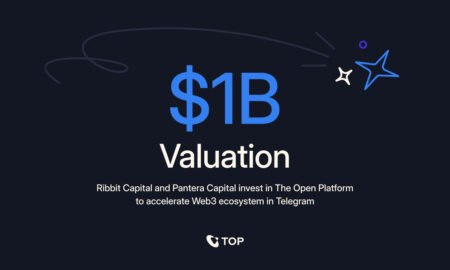Welcome to the future of insurance, where innovation meets flexibility in a way that’s reimagining how we protect what matters most. Enter Insurance-as-a-Platform (IaaP)—the groundbreaking model that’s setting the stage for an insurtech revolution. In a world increasingly driven by technology and customer-centric solutions, IaaP stands out as the next frontier for insurers looking to adapt, evolve, and thrive in our rapidly changing landscape. This blog post explores how this transformative platform is not just reshaping traditional insurance practices but also opening doors to unprecedented opportunities for collaboration, customization, and growth. Buckle up as we dive into the dynamic realm of IaaP—a game-changer for brokers, consumers, and innovators alike!
Introduction to Insurtech and its evolution
The insurance industry is undergoing a monumental transformation, leaving behind the dust of traditional practices and embracing technology like never before. Enter Insurtech, a term that encapsulates the innovation revolutionizing how we think about risk management and protection. From digital claims processing to algorithm-driven underwriting, the landscape has evolved rapidly over recent years.
But as insurers scramble to adapt to these changes, a new concept is making waves in this sector—Insurance-as-a-Platform (IaaP). This emerging model promises not only to streamline operations but also to enhance consumer experiences in ways we’ve yet to fully grasp. Buckle up as we dive into what IaaP means for both consumers and insurance companies alike!
Understanding the concept of Insurance-as-a-Platform (IaaP)
Insurance-as-a-Platform (IaaP) redefines how insurance services are delivered. It moves beyond traditional models to create a flexible, integrated ecosystem for insurers, customers, and third-party providers.
At its core, IaaP leverages technology to connect various stakeholders. This connectivity allows for the seamless exchange of data and services. Insurers can quickly adapt offerings based on real-time insights while consumers enjoy personalized experiences tailored to their needs.
The platform approach fosters innovation by enabling companies to build upon existing infrastructure. Startups can develop niche products that enhance value without starting from scratch.
In this environment, collaboration flourishes. Insurers no longer operate in silos but engage with fintechs and tech firms to expand their capabilities effortlessly. The result is a dynamic marketplace where agility reigns supreme and customer-centric solutions thrive effectively.
How IaaP is changing the traditional insurance landscape
Insurance-as-a-Platform (IaaP) is redefining how insurance operates. By integrating technology, IaaP allows insurers to connect with third-party services seamlessly.
Gone are the days of rigid policies and lengthy claims processes. With IaaP, customization becomes the norm. Consumers can tailor coverage options to fit their unique needs.
This flexibility empowers businesses as well. Insurers can quickly adapt offerings in response to market trends or consumer demands. Enhanced data analytics also drive smarter decision-making.
Moreover, collaboration thrives within an IaaP ecosystem. Insurers partner with startups and tech companies, fostering innovation that benefits everyone involved.
Customer experience takes center stage as platforms streamline interactions. Speedy service and transparency build trust—essential factors in today’s competitive landscape.
As these changes unfold, traditional insurance models face disruption like never before, paving the way for a more agile future.
Benefits of IaaP for consumers and insurance companies
Insurance-as-a-Platform (IaaP) offers a range of benefits for both consumers and insurance companies. For consumers, IaaP provides personalized products tailored to their specific needs. This means better coverage options that align with individual lifestyles and risk profiles.
For insurers, IaaP facilitates access to cutting-edge technology without the hefty upfront investment. Companies can leverage advanced analytics, artificial intelligence, and machine learning tools to enhance decision-making processes and streamline operations.
Additionally, IaaP fosters collaboration among various stakeholders in the ecosystem. Insurers can partner with fintechs or other service providers easily. This leads to innovative solutions that improve customer experiences while driving efficiency.
Ultimately, these advantages create a win-win scenario where consumers enjoy enhanced services while insurance companies increase profitability through smarter practices.
Real-life examples of successful implementation of IaaP
One notable example of Insurance-as-a-Platform (IaaP) in action is Lemonade. This insurtech company leverages technology to streamline the insurance process. By using AI, they offer instant coverage and a unique claims experience that keeps customers engaged.
Another case worth mentioning is Metromile. They utilize an IaaP model to provide pay-per-mile car insurance. This innovative approach attracts consumers who drive less, allowing for personalized pricing based on actual usage.
Root Insurance also stands out with its data-driven underwriting process. Through mobile app analytics, it assesses driver behavior to create tailored policies that reflect individual risk profiles.
These examples illustrate how companies are transforming traditional models into agile platforms focused on user experience and adaptability. The success stories highlight the immense potential of IaaP in reshaping customer engagement within the insurance space.
Challenges and limitations of IaaP
While Insurance-as-a-Platform (IaaP) offers numerous advantages, it also faces specific challenges and limitations.
One of the primary hurdles is regulatory compliance. Navigating the complex landscape of insurance laws can be daunting for providers operating on an IaaP model. Different regions have varying requirements that must be met.
Additionally, data security remains a significant concern. With increased connectivity comes heightened vulnerability to cyber threats. Protecting sensitive customer information is paramount yet challenging in such open platforms.
Adoption among traditional insurers can also prove difficult. Many established companies are hesitant to shift from legacy systems due to fear of disruption or loss.
Lastly, user experience plays a crucial role in successful implementation. If not executed well, the platform could overwhelm consumers rather than simplify their insurance journey. Each challenge requires careful consideration as the industry evolves.
The future of IaaP and its potential impact on the insurance industry
The future of Insurance-as-a-Platform (IaaP) appears promising, with technology driving unprecedented changes. As the insurance landscape evolves, IaaP stands to redefine how services are delivered.
Insurers will increasingly leverage data analytics and AI to offer personalized products. This shift means customers can expect tailored solutions that meet their unique needs.
Moreover, partnerships between insurtech firms and traditional insurers will flourish. Collaboration fosters innovation, leading to enhanced customer experiences and streamlined operations.
Regulatory frameworks are also adapting to accommodate these advancements. This evolution may pave the way for more flexible policies that support new business models within IaaP.
As we move forward, customer-centric approaches will be at the forefront of market strategies. The focus will remain on enhancing accessibility and efficiency in insurance services for all stakeholders involved.
Why IaaP is the next big thing in insurtech and what it means for customers.
The emergence of Insurance-as-a-Platform (IaaP) is reshaping the insurance industry in significant ways. By providing a flexible framework that integrates various services and technologies, IaaP enhances the customer experience while enabling insurers to innovate rapidly.
For consumers, this means more tailored products and easier access to information. They can enjoy seamless interactions with multiple service providers through one platform. Customization becomes the norm rather than the exception.
Insurance companies benefit too. With IaaP, they can leverage advanced analytics, artificial intelligence, and real-time data processing to improve risk assessment and enhance decision-making processes. This leads to better pricing models and refined underwriting practices.
As this model continues to gain traction, it encourages collaboration between traditional insurers and emerging tech startups. The result? A dynamic landscape where innovation thrives.
With challenges ahead—like regulatory hurdles or integration complexities—the potential of IaaP remains vast. It invites us all to rethink how we approach insurance in our daily lives.
Embracing Insurance-as-a-Platform could redefine what customers expect from their insurance experiences while driving future growth for companies willing to adapt swiftly in this ever-evolving sector.
Conclusion
The concept of Insurance-as-a-Platform (IaaP) may still be in its early stages, but it has the potential to revolutionize the insurance industry. By leveraging technology and creating a digital ecosystem, IaaP allows for seamless integration between insurers, customers, and third-party providers. This not only enhances efficiency within the insurance process but also opens up opportunities for innovation and personalized solutions. As we continue to see advancements in Insurtech, IaaP is definitely a frontier worth exploring for future growth and success in the insurance world.

































